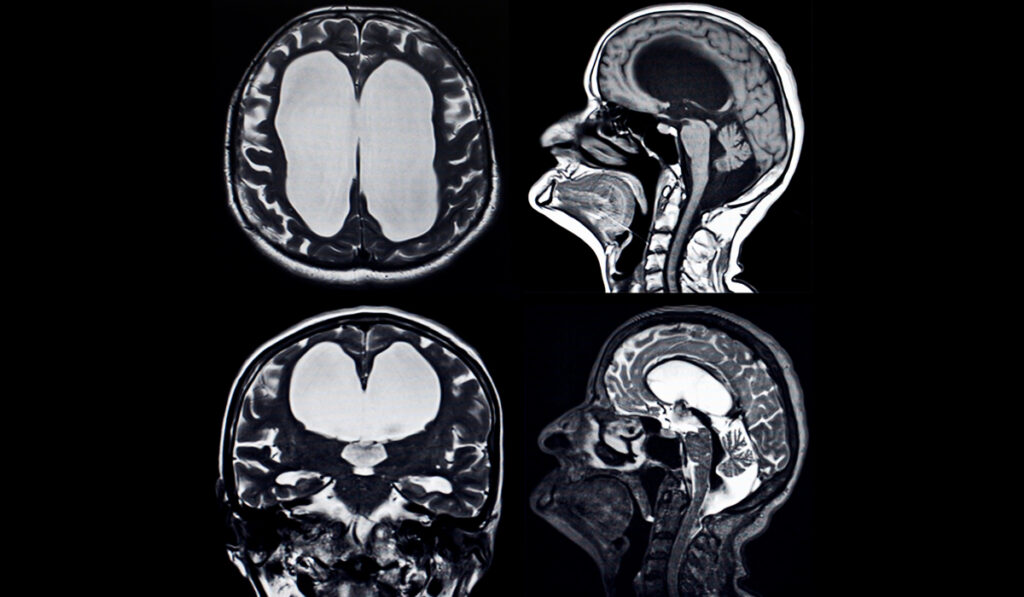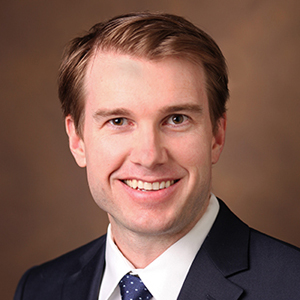Upwards of one-third of patients with a posterior fossa brain tumor will experience persistent hydrocephalus following resection, requiring a second surgical intervention.
Surgeons’ preferences, combined with case specifics, may determine whether cerebrospinal fluid is drained through the insertion of a ventriculoperitoneal shunt (VPS) or through an endoscopic third ventriculostomy (ETV), in which the surgeon creates a stoma at the base of the third ventricle.
While these decisions are invariably nuanced, pediatric neurosurgeon Michael C. Dewan, M.D., at Monroe Carell Jr. Children’s Hospital at Vanderbilt, is working to ferret out the pros and cons of each decision. Based on his research and clinical experience, he hypothesizes that stomas created through ETV may be generally underutilized as an option.
“With VPS, we are talking about a lifelong shunt that needs to be watched by a neurosurgeon over a tremendous number of follow-up visits, MRIs and CT scans for the rest of the patient’s life,” Dewan said. “There is a higher complication rate with the shunts, and if the shunt becomes blocked, the patient has to get to a qualified medical facility quickly.”
Surgical Decisions in Real Time
The risk of persistent hydrocephalus after resection can be hard to predict, but when it develops, reliable drainage is needed to alleviate the approximately two cups of cerebrospinal fluid the body produces daily.
In VPS surgery, a shunt is inserted to connect the deep-seated brain ventricles to the peritoneum by a series of tubes and valves that run under the skin so that excess cerebrospinal fluid is drained into the peritoneum. With an ETV, a stoma is created at the base of the third ventricle, and the fluid is reabsorbed on the outer surface of the brain.
“With VPS, we are talking about a lifelong shunt that needs to be watched by a neurosurgeon for the rest of the patient’s life.”
Dewan says the decision between ETV and VPS can be made at the time of surgery for hydrocephalus relief.
“I can go in with the family’s permission to perform either procedure, with the hopes of doing an ETV,” he said. “In about 10 percent of cases, prepontine adhesions or other issues may make a shunt the better route. But if you are comfortable with both procedures, it is good to go in with options on the table.”
In the small subset of ETV patients where the stoma fails to provide sufficient drainage, Dewan says a second surgery to implant a shunt may be necessary. His team is investigating what variables increase the risk for stoma failure, with the goal of avoiding second surgeries.
Retrospective Comparison
To compare outcomes from the two procedures, Dewan led a time-to-failure analysis that looks at the durability of 284 patients who underwent ETV versus 124 who received the shunt. Subjects were below 19 years of age and had developed hydrocephalus following a posterior fossa brain tumor resection.
Overall, a significant survival advantage was not demonstrated by one procedure over the other. While the median time-to-failure was earlier for the ventriculostomy than for VPS placement (0.82 versus 4.7 months), the cumulative failure rate of ETV was lower, at 21 percent versus 29 percent for VPS placement. Postoperative complications were also lower following ETV (17 percent) versus VPS surgery (31 percent).
Dewan also points to the need for high-quality hydrocephalus research to deliver the data needed to create an individualized surgical approach for each patient. Pursuing this, Dewan and the Vanderbilt team are leading a multicenter study using data from more than a dozen high-volume pediatric centers across North America. The study is sponsored by the Hydrocephalus Clinical Research Network.
“With more data, I suspect we’re going to learn there is a subset of patients that certainly benefit from ETV and a subset that do not,” Dewan said. “We think age, tumor size, and how much is resected will factor heavily into the mix. We hope to tease these out, so surgeons more thoroughly understand the how to counsel patients and recommend one procedure over the other.”
Exploring ways to reduce hydrocephalus development to begin with, Dewan and colleagues have also investigated graft dural closure during resection, finding that it may be protective against cerebrospinal fluid leak, wound infection, and hydrocephalus.
Better Odds for Low-resourced Populations
Some of Dewan’s inspiration for promoting ETV stems from his time working in low-resourced countries, where a patient with a failed shunt may die during an hours-long transport to a medical center. To help limit such cases, Dewan has been training surgeons in East Africa and Southeast Asia to perform ETV using a flexible endoscope for nearly a decade.
“I suspect we’re going to learn there is a subset of patients that certainly benefit from ETV.”
Dewan emphasized that any child – whether in a major city or rural community – can gain both short- and long-term quality-of-life benefits by having an ETV performed by a well-trained surgeon.
“Patients with shunts often live with worry that a headache might mean a blocked shunt, as well as the inconvenience of constantly seeing neurosurgeons and getting imaging all their lives,” Dewan said. “If you can spare a patient that, then you’re obviously doing them, and also the medical community and the healthcare infrastructure, a big service.”






